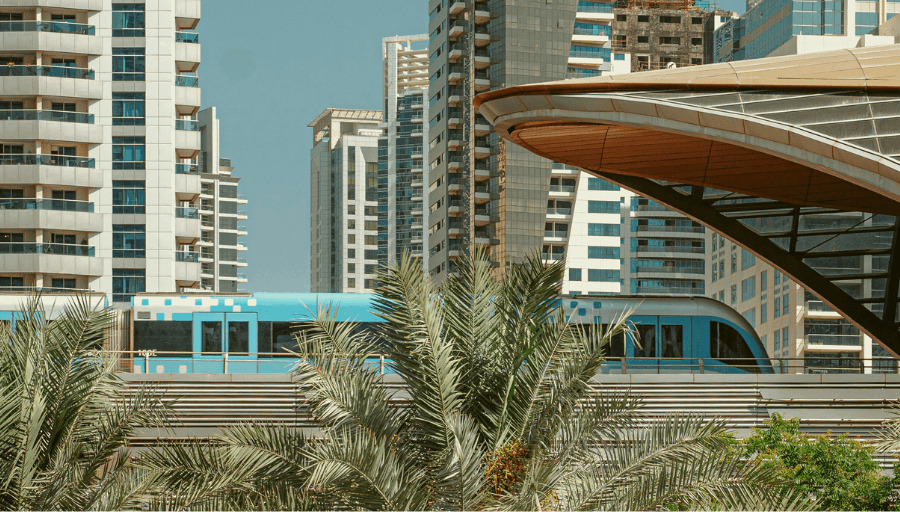As cities across the world grow and develop, one of the primary focuses of urban planning is ensuring efficient, reliable, and sustainable transportation systems. Among the most effective and transformative transportation solutions are metro systems. These rapid transit networks have revolutionized how people commute, offering fast, affordable, and environmentally friendly alternatives to traditional road transport. In particular, the concept of being “metro close” — living or working near a metro station — has become increasingly important for both residents and businesses in urban centers.
Metro systems provide numerous benefits, including reduced traffic congestion, lower carbon emissions, faster commutes, and improved urban mobility. As cities face the challenge of accommodating growing populations while maintaining sustainability and reducing congestion, the strategic positioning of metro stations has become central to urban development. Being “metro close” has numerous advantages, including higher property values, increased business opportunities, and enhanced accessibility for diverse populations.
The Importance of Metro Proximity in Urban Development
Urban development is no longer just about constructing buildings and creating residential areas. Metro systems are now central to how cities plan their expansion. Proximity to a metro station is a powerful factor in urban development. Areas located near metro stations typically experience higher rates of investment, both from real estate developers and businesses seeking the advantage of high foot traffic.

The creation of “metro-centric” developments is a growing trend, where entire neighborhoods or commercial districts are designed around the accessibility of metro stations. This is not only beneficial for businesses and developers but also contributes to the social and economic vitality of these neighborhoods. With easy access to metro systems, people are more likely to settle in these areas, boosting the local economy and improving the community’s overall quality of life.
Advantages of Being “Metro Close”
Living or working “metro close” offers several advantages, many of which extend beyond the individual commuter. The convenience, environmental benefits, and economic opportunities associated with proximity to a metro station create a ripple effect that positively impacts a wide range of sectors, from real estate to the environment.
- Reduced Commuting Time: One of the most immediate and significant benefits of being close to a metro station is the reduced commute time. Metro systems are typically faster than cars, buses, or other forms of road transport, especially in cities with heavy traffic congestion. A 20-minute metro ride might take an hour or more by car during peak hours, leading to a substantial reduction in commuting time for residents living near metro stations. The efficiency and punctuality of metro systems enable workers to spend less time in transit and more time on productive activities.
- Cost Savings: Metro travel is often more affordable than driving a private vehicle. The cost of owning and maintaining a car — including fuel, parking, maintenance, and insurance — can be quite high, particularly in large cities with expensive parking or heavy traffic. Living or working near a metro station allows individuals to forgo the expenses associated with private car ownership and opt for a more affordable and sustainable form of transportation. As cities develop more metro networks, residents and commuters are increasingly finding that metro-based living can significantly reduce daily transportation costs.
- Environmental Benefits: Metro systems are widely regarded as one of the most environmentally friendly modes of transportation. They produce significantly less carbon emissions per passenger compared to cars, buses, or other vehicles. By reducing the number of private cars on the road, metro systems help alleviate air pollution and reduce the urban carbon footprint. For those who live or work near metro stations, the environmental impact is an added benefit — their reliance on public transportation helps support sustainability goals and fosters eco-friendly lifestyles.
- Improved Accessibility: For many individuals, including the elderly, disabled, or those without access to private vehicles, metro systems offer an essential means of transportation. Metro stations are designed to accommodate a wide range of passengers, including those with limited mobility. Living near a metro station means greater independence and access to critical services, such as healthcare, education, and employment, all of which may otherwise be difficult to reach. Proximity to metro stations also helps integrate marginalized populations into the broader city, enhancing social mobility and reducing barriers to essential services.
- Boost to Local Businesses: Metro stations serve as hubs of economic activity, and areas near these stations often experience a surge in business development. Retailers, restaurants, service providers, and other commercial entities benefit from the increased foot traffic generated by metro passengers. The ease of access to these businesses boosts sales and brings customers who may not have otherwise visited the area. Furthermore, businesses located near metro stations can attract a more diverse customer base, as the stations connect different parts of the city, from residential neighborhoods to commercial districts.
- Increased Property Value: One of the most tangible benefits of being “metro close” is the increase in property values. Residential and commercial properties located near metro stations tend to experience a rise in demand, driving up their market value. In addition, proximity to a metro station can make a property more desirable to both buyers and renters, who prioritize convenience and easy access to transportation. Developers often focus on locations near metro stations for new housing or commercial developments, understanding the potential for higher return on investment due to the popularity of these locations.
- Social Mobility and Quality of Life: Access to metro systems improves social mobility by enabling residents to more easily connect with various parts of the city. People living near metro stations can more readily access job opportunities, education, healthcare, and social services that might be located in other parts of the city. In cities with well-integrated metro systems, individuals can move freely, contributing to better overall quality of life. The convenience of rapid transit fosters inclusivity, allowing people from all walks of life to participate more fully in the city’s economic, social, and cultural life.
Challenges of Metro Accessibility and Planning
While the concept of “metro close” living offers many advantages, there are several challenges associated with the development and expansion of metro systems. Cities must navigate these obstacles to create effective metro networks that serve all residents equitably and efficiently.
- High Construction and Maintenance Costs: Metro systems are costly to build, especially in dense urban areas with limited space. The construction of tunnels, tracks, and stations requires significant investment and can disrupt existing neighborhoods. Additionally, maintaining and upgrading metro systems is a continuous cost that cities must prioritize to ensure safety, reliability, and capacity. For cities with limited budgets, expanding metro networks may present a challenge, slowing down efforts to enhance urban mobility.
- Overcrowding and Capacity Limitations: In cities with rapidly growing populations, metro systems can quickly become overcrowded, especially during peak hours. Overcrowded trains and stations can lead to discomfort, delays, and even safety concerns. Cities must plan for future capacity needs, expanding and upgrading metro networks to accommodate growing ridership. Failure to address capacity limitations may lead to decreased service quality and reduced commuter satisfaction.
- Land Use and Zoning Issues: Metro stations often require the repurposing of existing land, which can lead to conflicts with existing land use and zoning laws. In some cases, the development of metro stations may face resistance from local communities or developers concerned about potential disruptions, such as noise, traffic, or changes in property values. Balancing the need for metro infrastructure with the concerns of local residents and businesses is a critical aspect of urban planning.
- Equitable Access: Ensuring that metro systems serve all residents equitably is another challenge. Metro stations must be accessible to people from various socioeconomic backgrounds, including those living in low-income neighborhoods or communities with fewer resources. Ensuring affordability, availability of services, and accessibility to marginalized populations is essential for metro systems to achieve their full potential.
Conclusion: Metro Close as a Catalyst for Urban Transformation
As urban populations continue to grow, the importance of efficient and accessible metro systems cannot be overstated. The proximity of metro stations is becoming a key factor in urban development, driving investment, enhancing business opportunities, and improving the quality of life for residents. The advantages of being “metro close” — faster commutes, reduced costs, and increased property values — make metro stations a vital asset to cities and their populations.
While challenges such as construction costs, overcrowding, and equitable access must be addressed, metro systems have the potential to transform urban spaces into more sustainable, accessible, and connected environments. In the future, as cities continue to prioritize public transportation and sustainable living, the demand for “metro close” living will only increase, contributing to a more connected and vibrant urban experience for all.
Do follow Uae stories for more Updates
Dubai’s Turtle Rehabilitation Project: Saving Sea Turtles One Step at a Time













